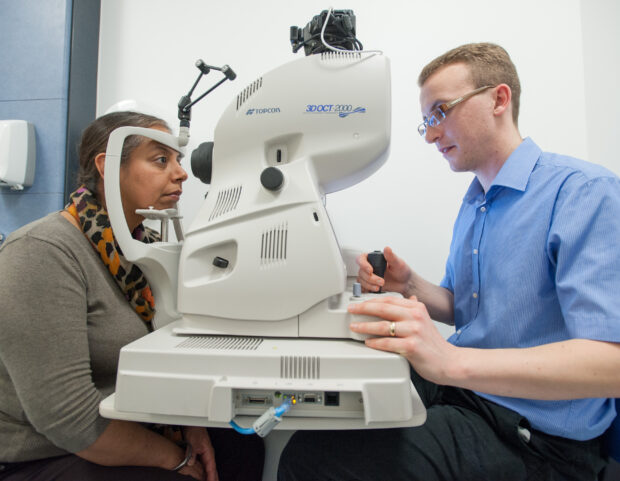Diabetic eye screening is an integral part of diabetes care as it helps prevent or reduce sight loss due to diabetic retinopathy.
Screening services rely on GPs identifying people with diabetes over 12, the age at which they become eligible for screening.
In some areas, manual processes are still used to notify screening services of new patient referrals, and for services to check the accuracy of their data. This can be time-consuming for GP practice staff and screening staff.
The centrally managed and endorsed GP to diabetic retinopathy screening (GP2DRS) IT system extracts the demographic information of patients eligible for screening from GP practice systems across England. Local services that use the system get a monthly list of all patients eligible for screening at the practices in their area. This list contains up to date demographic details of the patients, ensuring the correct address is used in programme correspondence.
GP2DRS is provided free of charge to local screening programmes.

As of December 2017, 27 out of 63 local programmes were using GP2DRS to extract their cohort of patients from all their GP practices. A further 11 programmes are trialling the extract with some of their practices. The total number of patients now being extracted has reached 1 million.
The Wirral Diabetic Eye Screening Programme changed from manual validation to using GP2DRS in June 2017.
Wirral programme managers Tim Currie and Pam Niccolls said:
All of The Wirral GP practices are participating in GP2DRS. We are now receiving automatic monthly downloads of GP practice diabetic patient lists. This is making the task of validating the single collated list of patients much easier and less time consuming. We no longer have to rely on the practices to email their list to us.
In future GPs will be changing the way they assign codes to patients in their practice IT systems according to disease/condition. This may affect any currently locally-procured extract services. GP2DRS will be updated to ensure it will continue to work when the new coding comes into place from April 2018.
If you are interested in potentially using GP2DRS please email gp2drs.support@nhs.net and speak to your local quality assurance advisor.
PHE Screening blog
PHE Screening BLOG articles provide up to date news from all NHS screening programmes. You can register to receive updates direct to your inbox, so there’s no need to keep checking for new blog articles.